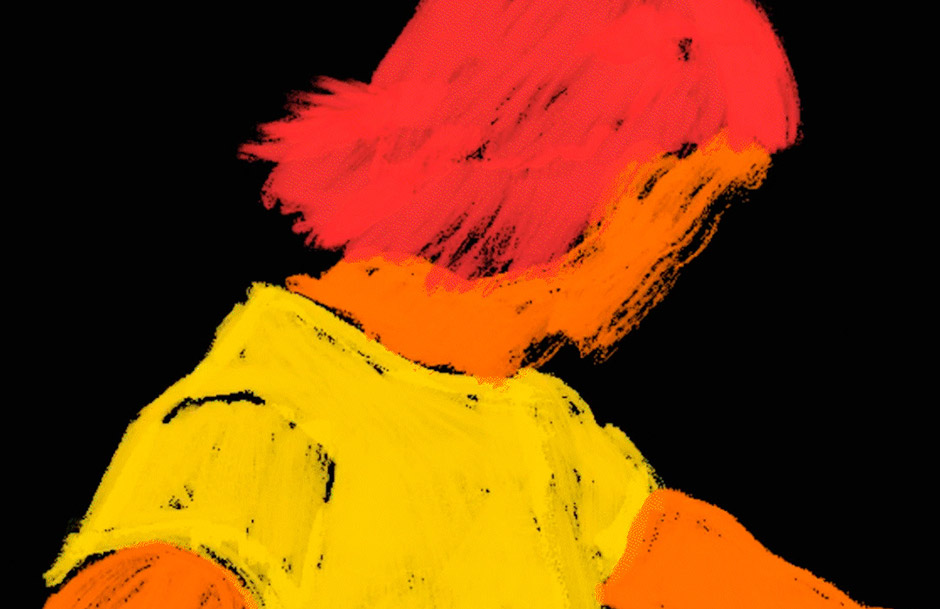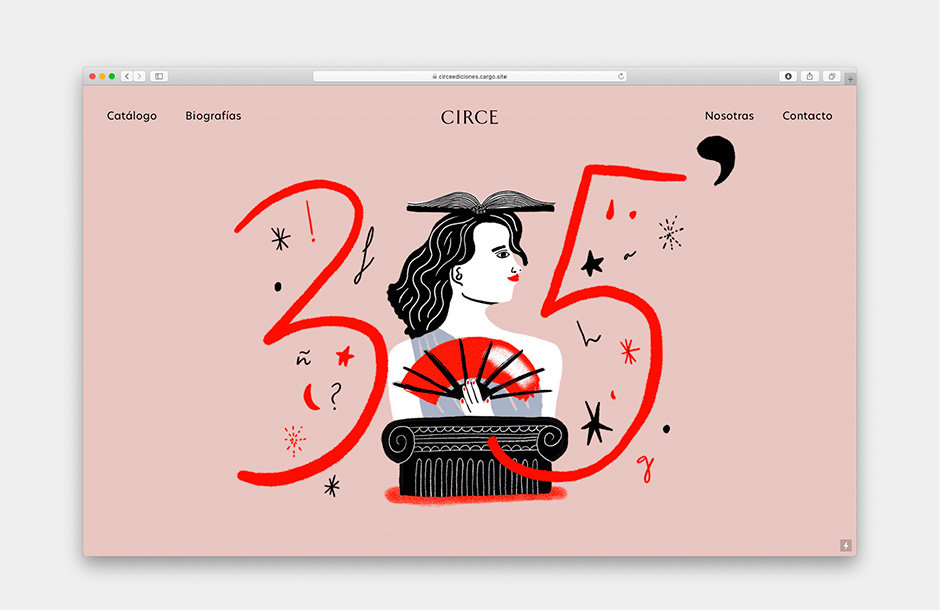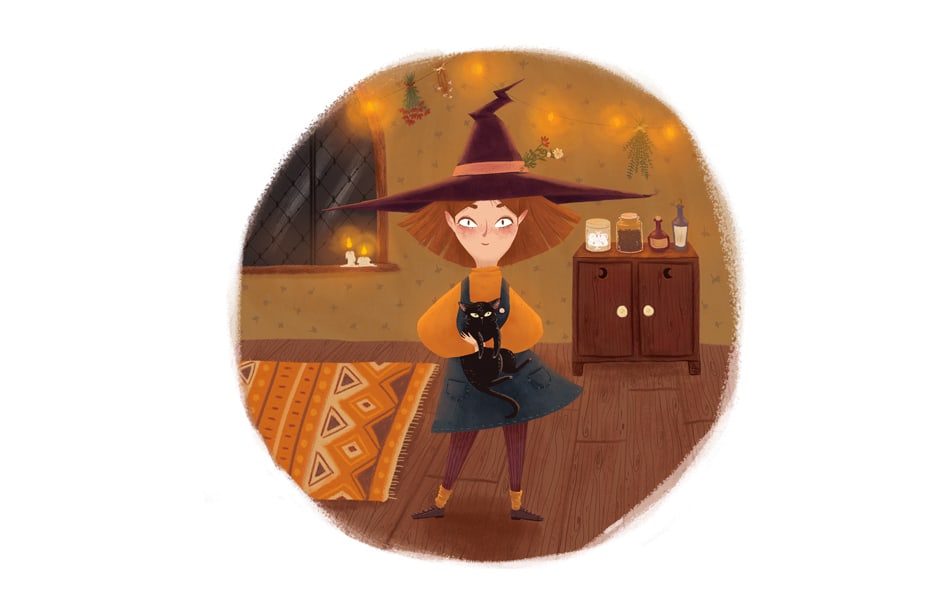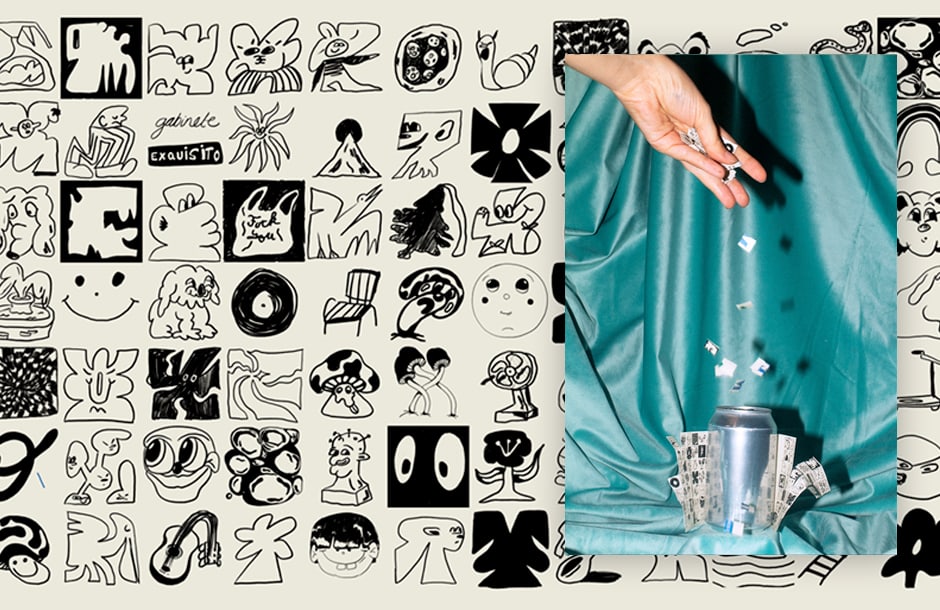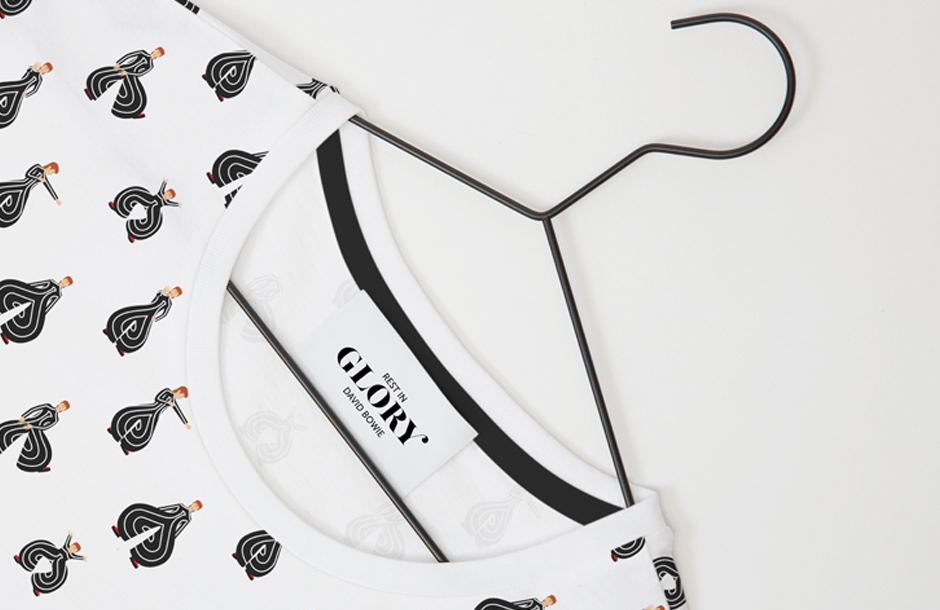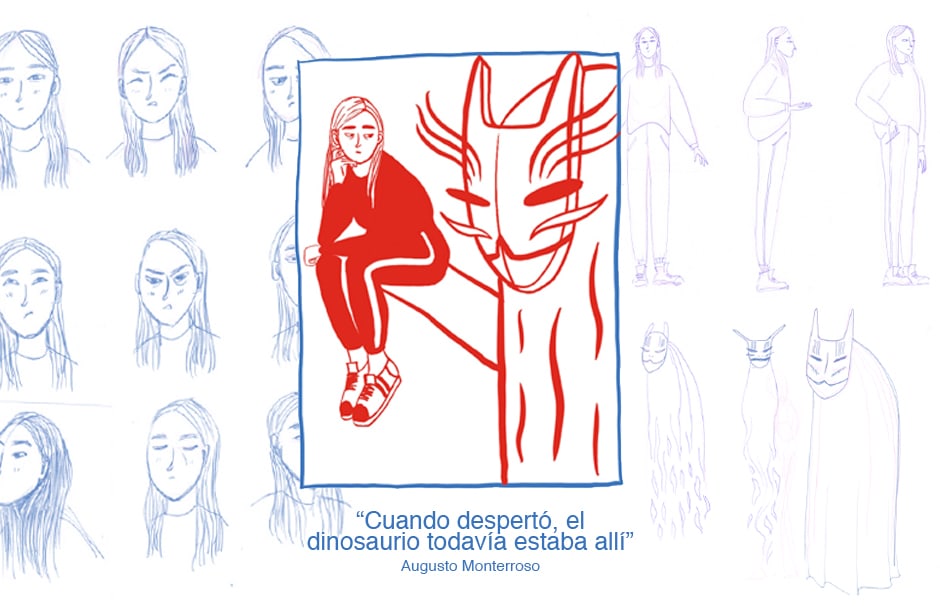
Master in Creative Illustration
Become a professional and find your own creative language in the world of illustration as a means of artistic expression applied in its different fields
Description of the curriculum
- Edition: 9th
- Teaching period: from October 2024 to June 2025. Final master's project presentation: June 2025
- Schedule: from Monday to Thursday from 4 p.m. to 7 p.m.
- Modality: on-site
- Language: Spanish
- Price: 9.320 €
- Qualification: Master's Degree in Creative Illustration awarded by the UVic-UCC
- Credits: 60 ECTS
Presentation
The professional field in which illustrators develop their careers comprises various areas of communication: advertising, press, literature, design, product application and new audiovisual formats.
The Master’s Degree in Creative Illustration will analyse the numerous fields, uses and applications of illustration demanded by the market, while developing both technical and conceptual issues as students seek their own voice and an understanding of illustration as a form of artistic expression. This programme will delve into the functions of illustration while examining its principal fields and applications in depth, along with illustrators and the role of their work as an information provider, trend generator, critic, historian and graphic chronicler.
The Master's Degree in Creative Illustration is worth 60 ECTS and can be earned by completing the two postgraduate courses worth 30 ECTS each. These postgraduate courses can be taken in the same or different academic years. Additionally, all the postgraduate courses that make up part of a master's degree can be completed independently.
Syllabus
This Postgraduate degrees are made up of 8 modules each that describe the different categories and functions of illustration, and concludes with a final project. In the modules the students will develop theoretical and practical contents with the creation of illustrations for the different areas of this profession.
The modules will be imparted by teachers, all of them well-known professionals in the illustration sector. They will suggest exercises from their own experience in their own fields: narrative, trends, new media, product, Press, comic, etc.
The modules will be completed with interventions, lectures and talks which, occasionally and throughout the course, will be given by working illustrators who are specialized in the different sectors of illustration.
Postgraduate degree in illustration
Module 1 - Illustration in the press Module 2 - Illustration of trends Module 3 - Children's illustration. Narrative and literature Module 4 - Advertising. Graphic campaign Module 5 - Scientific illustration Module 6 - Packaging Module 7 - New media and formats Module 8 - The employment market
Postgraduate degree in digital illustration and new media
Module 1 – Graphic editing Module 2 – Fundamentals and applications Module 3 – Conceptualisation Module 4 – Illustration for eBooks Module 5 – Artificial Intelligence, Extended Realities and Web3 Module 6 – Transmedia communication Module 7 – Illustration applied to the product Module 8 – Project methodology
Programme
Postgraduate Degree in Illustration
Module 1 – Illustration in the press
Illustration constituted the graphic content of magazines and newspapers from its appearance in the 19th century until the 1950s. The students will study the different applications of an illustrator's work in this field. They will analyse the function of illustration in the Press and in magazines as well as its main contemporary uses.
- Illustrations in the daily Press.
- Illustrations for an article in a Trends Press publication.
- The comic strip.
- Analysis and comprehension of a text.
- Development and gestation of graphic ideas.
- Past and present models: viewing of images.
Module 2 – Illustration of trends
Illustration, given its costumbrist nature, has been the main way to describe styles of life and clothing since the 18th century. Detached from the main subjects of painting, the work of an illustrator observes and recreates how people behave and live by analysing the trends in different everyday environments. Illustrations nourished the graphic content of fashion magazines until the appearance of photography, although illustration is still used today.
- The field of the Trends Press.
- A fashion collection: recreating and describing.
- Illustrations for an article in a Trends Press publication.
- Illustration for textile application.
- The human form: comprehension and representation through different technical and conceptual processes.
- Short history of fashion illustration.
Module 3 – Children's illustration. Narrative and literature
In the 19th century, with the improvements of reproduction techniques in England, began the rise of illustrated literature. Writers and illustrators worked together to unite their work, and illustration decorated and gave a new dimension to the book as a consumer article and a means of spreading ideas. Currently, the illustrated book is an indispensable tool for education and play and one of the illustrator’s main vehicles of expression.
- Illustrations in the field of narrative for adults and children.
- Technical and conceptual processes for developing illustrations.
- The illustrated book: composition and diagramming. Illustrations and cover of an illustrated book.
- Psychological and formal representation of the characters of a narrative work: character creation.
- The graphic novel and the sequential narrative.
- The narrative of the 20th century: the main illustrators.
Module 4 – Advertising. Graphic campaign
Since the 19th century, illustration has promoted products, decorated packages and recreated the philosophy and universe of trademarks. The advances of lithographical techniques launched posters as one of the great means of artistic expression, establishing the foundations of visual communication by focusing on large audiences. In the field of advertising, the illustrator generated idealizations of reality and materialized the spirit of products and trademarks, converting illustration into an important means of persuasion as well as a vehicle for expression and communication. The advertising campaign disseminated the work of artists in an unprecedented manner.
- A series of illustrations will be developed, starting from a hypothetical briefing for the graphic contents of a campaign.
- Briefing: analysis and comprehension.
- Communication strategy: process.
- The campaign: graphic development.
- Multiple supports: application.
- The budget.
- A short history of graphic campaigns.
Module 5 – Scientific illustration
The students will analyse the most technical application of illustration. The Renaissance painters became interested in the analytical representation of Nature and converted anatomical and botanical studies into one of the main artistic manifestations. During the 19th century, the rise of science demanded an infinity of exhaustive descriptions as instruments for research and understanding in different areas. Today, medicine, biology and engineering need the work of the illustrator for technical development, since infographic processes are the main tools of an illustrator, providing scientific drawings with greater descriptive and analytical rigour.
- Development of analytical skills.
- Infographic tools.
- Illustration of botanical/zoological topics.
- Pictorial tools.
- Introduction to hyperrealistic languages.
Module 6 – Packaging
The students will study how the revolution in printing techniques and the industrial production of goods generated a new market for designers and illustrators, of crucial importance in the 20th century, and which converted packaging into one of the main formats for visual communication. The decoration of packaging was to shake up popular culture by converting the product into a cultural referent, and by invading the collective popular imagination with an infinity of icons, endowing products with a huge emotive charge and a new dimension.
- The relationship between product and image.
- Design and illustration of a CD digipack.
- Non-figurative graphic resources.
- Introduction to typographic/calligraphic treatment.
Module 7 – New media and new formats
In recent years, graphic communication has been defined by the desire to search for new formats and strategies, and illustration has found its place in numerous new media. The new reprographic techniques have allowed illustration to be applied to many and different materials, which has allowed the illustrator's work to be spread widely. Illustrators have diversified the uses of their work among endless products and have managed to open a market that is becoming more and more extensive.
Occasional interventions from experts who will intervene and show their work applied to the latest trends in formats and media.
Module 8 – The employment market
Gaining access to the employment market is difficult, and we need information and mastery both of the social networks and of the platforms that will give visibility to the illustrator's work.
Participation of Gemma Cortabitarte, manager of APIC (Associació Professional d’I·lustradors de Catalunya).
Postgraduate Degree in Digital Illustration and New Media
Module 1 – Graphic editing
Based on the design and development of an online editorial front cover, technical content related to the industry-standard editing programs will be introduced. The aim is the acquisition of the planning and management fundamentals required for the proper use of tools and format types: vector graphics, rasterisation and layout.
To enable the exercises within the postgraduate diploma to be properly carried out, practical fundamentals will be covered alongside the use of the industry-standard graphic editing programs (Illustrator, Photoshop and InDesign).
- Creation and modification from an analogue original.
- Colour application tools.
- Layout, typographic design and animation.
- Adaptation of interactive design to tablets and smartphones.
- Adaptation of images to packaging (mock-up).
Module 2 – Fundamentals and applications
The content of this module addresses the formats and platforms through which illustration and graphic production is applied. Knowledge of these is an important starting point for the future planning of the promotion and design of projects in relation to individual aims. Moreover, analysis of media will also provide an introduction to the study of multimedia elements, where techniques related to interaction, animation and other resources will be outlined.
- Adaptation of manual illustration to digital formats.
- Creation of draft animations.
- Design of interactive products, interfaces and usability.
- Sprites, Texture Atlas, Frame by Frame and other formats for developing digital applications.
- Interaction and animation tools for video games and apps.
Module 3 – Conceptualisation
Visual communication strategies and resources will be developed through a series of exercises and the presentation of content. The primary goal is the acquisition of skills related to creative processes and communicating messages.
The module is delivered as a workshop oriented towards conceptual development in which individual, cultural and social experience intervene. The practices and theoretical content applied provide an essential basis for the realisation and development of future proposals within the postgraduate diploma, while helping the students to familiarise themselves with common processes associated with artistic and advertising language.
- Image theory.
- Visual resources and means of representation.
- Plastic significance.
- Icon creation.
- Conceptualisation and perception.
- Formal and conceptual synthesis.
Module 4 – Illustration for eBooks
The image as a visual representation of a text or concept can be found in nearly all projects involving illustration. Through the creation of illustrations, the methodological processes for conveying messages and their adaptation to the languages of different audiences will be studied. Meanwhile, and following an in-depth study of the formats, the technical procedures for adapting animated illustrations to electronic devices will also be covered.
- Methodologies for the planning of graphic production process.
- Formats and media to which images are applied.
- Proposal of illustrations suitable for eBooks.
- Analysis of styles, genres and dissemination channels.
- Development and creation of elements and characters.
- Adaptation of illustration to digital formats.
- File and application formats.
Module 5 - Artificial Intelligence, Extended Realities and Web3
Through contents and exercises, this module deals with the study and application of new technologies that bring differential value and competitive advantages to our illustration projects. Extended technologies (virtual reality, augmented reality and mixed realities), Web3 and Artificial Intelligence.
- Extended Realities as new platforms for content creation and visualisation.
- Virtual Reality (VR), Augmented Reality (AR) and Mixed Reality (MR).
- Exploration of the creation of specific content for Extended Realities.
- Web3 and Blockchain: its present and future uses in the world of illustration.
- Artificial Intelligence (AI): Definition, origin, evolution and uses.
- Application of Artificial Intelligence in illustration projects.
Module 6 – Transmedia communication
Based on the proposal of a promotional campaign, some of the trends and tools applied in digital marketing will be analysed, along with the importance of the content and the interaction of the potential user, which are typically decisive elements for effective dissemination. The transmedia narrative is one of the most widely employed strategies in advertising applied to new media. During the module, practical exercises will be completed in multiple formats to enable the development of a project that studies planning processes and technical applications.
- Transmedia narratives.
- Planning and viability of graphic campaigns.
- Strategies and resources for the development of promotional campaigns.
- Narrative development in promotional campaigns.
- Multiplatform and crossmedia.
- Transmedia creativity and media planning.
- Analysis and use of interaction resources.
- Application of multimedia elements.
Module 7 – Illustration applied to the product
The image is a decisive element in branding and is essential to the process of attracting a specific audience, while also defining aspects related to the perception of and interaction with the product. Regarding its application, aspects related to functionality, identity, media, innovation and differentiation will be covered. Addressing specific and individual aims, the module analyses the adaptability and integration of digital illustration applied to products.
- Proposal of illustrations applied to the product.
- Creation of a Capsule Collection.
- Application to industrial design.
- Study and adaptation of images to products.
- Resources and production techniques.
Module 8 – Project methodology
This module covers promotion and professional orientation, addressing planning processes for methodologies and strategies. The primary aim is to design a self-promotion proposal, taking into account the various stages that provide methodological support to the project through the formulation of general and specific goals, beginning with the research and analysis process and progressing to its application and presentation.
- Planning and project management.
- Promotion strategies.
- Resource acquisition.
- Content selection.
- Construction, planning, description and presentation.
- Analysis of dissemination and promotion channels.
Teachers
Coordinator
Sito Mújica
A qualified Graphic Designer and visual artist
Coordinator of Graduate Illustration Digital and New Media
Coordinator
Berto Martínez
Illustrator
Coordinator of Graduate Illustration
Guillem Casino
Technological coaching for graphic design
Javi Royo
Illustrator and Graphic Designer
Chamo San
Illustrator
Gemma Cortabitarte
Bachelors's Degree in Journalism
Joan Miquel Bennassar
Illustrator
Sonia Pulido
Bachelor's Degree in Fine Arts
Carmen Segovia
Illustrator specialising in narrative and the press
José Luis Merino
Illustrator specialising in the press
Mamen Morillas
Illustrator
Chidy Wayne
Designer and Illustrator
Javier Jaén
Graphic Designer and Illustrator
Chuso Ordi
Graphic artist
Mercè Iglesias
Graphic Designer and Illustrator
Xavi Ramiro
Illustrator
Andrés Requena
Graphic Designer and Art Director
Martín Tognola
Illustrator - Press / Editorial
Career opportunities
- Illustrator in various fields: Press, narrative and literature; Technical and scientific; Fashion and trends; Packaging and advertising.
- Illustration applied to digital media.
- Art direction for digital publications.
- Management of digital communication projects and community manager.
- Management of multimedia promotional projects.
Payment methods
Total cost of the course: 9.320 €
The total cost includes an amount of 200 € concerning the university fees, the administration expenses and the compulsory insurances.
Payment methods
BAU, Arts and Design College of Barcelona offers different terms of payment:
-
Single payment
-
Part payment, in 3 instalments:
-
1st payment, due on enrolment: consisting of 40 % of the fees excluding taxes. An amount of 200 € concerning the university fees is added to the resulting cost
-
2nd payment, due November 5: consisting of 30% of the course excluding taxes
-
3rd payment, due January 5: consisting of 30 % of the course excluding taxes
-
Students and former students of BAU benefit from 10% discount on any of the courses if they have exceeded at least 50% of the credits for a Degree, Higher Degree in Design or the Diploma in Graphic Design; or 100% of the credits for any of the Master’s or Postgraduate degrees.
More information about scholarships and grants.
Information about the registration process.
Academic regulations for Masters and Postgraduate Degrees of BAU.
Download the brochure
Enter your details and we will send you an email with the Master in Creative Illustration brochure.
